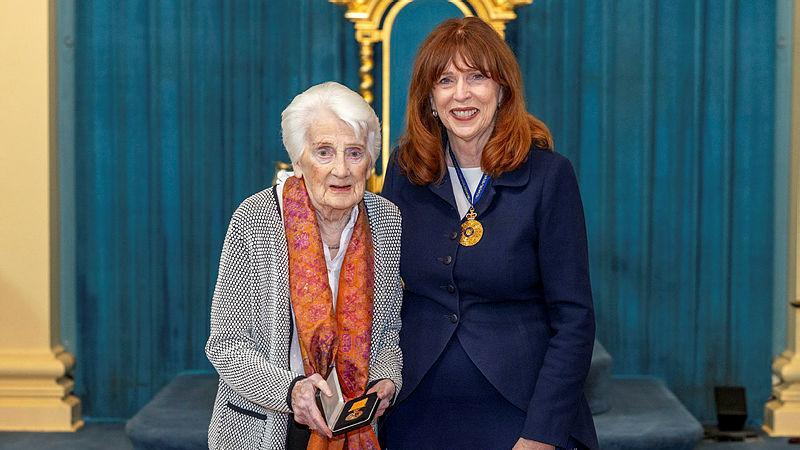*Check against delivery*
I am delighted to join you at the Inaugural National Defence Industry Skilling and Workforce Summit which is of course part of the Government’s $200 billion investment in our defence capability.
As a Government we are making record investment in defence capability and we are committed to increasing defence spending to two per cent of GDP.
This summit recognises that we need a strong and skilled domestic workforce to build the capability required now, and into the future.
Recognising the challenges we face – or rather as I see it – the opportunities ahead – the Government is implementing our Defence Industry Skilling and STEM Strategy.
The Strategy, as you know, has several aims including:
- Accelerating the national collaboration needed to grow the broader Defence Industry workforce and skills base to meet Defence capability needs of the future; and
- Ensuring Defence’s engagement with industry considers the workforce capabilities, issues and capacity of Australian businesses – micro, small, medium and large.
These aims are directly aligned with my portfolio responsibilities of Employment, Skills, Small and Family Business, which is why I work closely with Minister Melissa Price and why we have a whole-of-government focus on ensuring we have the skilled workers to build the workforce of the future.
As your Government we are committed to creating the right operating environment to ensure new jobs are created for hardworking Australians.
And our track record on this is good.
Since coming to Government in September 2013, our policies have supported the creation of 1.5 million jobs and there are now a record number of Australians in employment.
Not prepared to stop there – the Prime Minister has set an ambitious target to support the creation of an additional 1.25 million new jobs over the next five years.
The Defence Industry sector is a huge part of that plan – but we need to make sure Australians are skilled appropriately to take up the opportunities in this growing sector.
This summit is important because it highlights that over the next decade and beyond, the demand will increase for Australian workers with trade, technical and science and technology skills.
To get the most out of our investment and deliver the capability we need, it is imperative that we continue to drive engagement with industry and fast-track the national collaboration needed to grow the skills-base of Australian defence industry, and help this sector thrive.
There’s no doubt skills are the new currency of labour market activity.
That is why we are putting skills at the centre of building our future workforce.
We are committed to ensuring Australia’s VET system becomes even more responsive to the needs of industry – because industry are the job creators and you know the skills you need.
We need a VET system that provides for flexible and applied ways of learning, so people can lay strong foundations for their careers and then build further skills and knowledge throughout life to participate in new and changing industries.
Take our $90 billion investment in naval ship building for example.
The Naval Shipbuilding Enterprise will require an extremely broad range of skills – from specialist engineers and program managers, to logistics experts and data analysts, highly skilled designers, planners, and advanced tradespeople and technicians, supported by excellent leadership and business enabling areas – all of which need high levels of digital literacy.
Delivering this diverse workforce will require coordinated action from a range of stakeholders, and require all stakeholders within the Enterprise to maintain a broad focus on skills pipelines.
According to the Naval Shipbuilding Plan, the naval shipbuilding workforce alone is expected to grow to around 5,200 workers by the mid to late 2020s, with more than double this number of workers in sustainment activities and throughout supply chains. These are fantastic opportunities for Australians and we need to deliver them!
Critical to the delivery of this program is the need to ensure that workers with the right skills are available – when they are needed – to support not only shipbuilding activities – but also supply chain networks and sustainment activities nationally.
The skills system will play a vital role in supporting the future workforce for naval shipbuilding – both for entry level qualifications and life-long learning – and career pathways into shipbuilding and within the industry.
And the VET sector will play a key role in training new skills, as well as transferring or upskilling existing skills, for the jobs of today and tomorrow.
Recognising the importance of the VET and skills system for Australia’s future, the Government has invested $585 million in our skills package – Delivering skills for today and tomorrow.
This package is focused on enhancing the VET sector to better deliver the skilled workforce of the future – with industry at its heart. This is key to getting it right!
Our skills package promotes a national approach to skills development as well as enhancing the role of industry in designing training packages.
We have established the National Skills Commission and appointed leading economist – Adam Boyton – as interim National Skills Commissioner – to provide national leadership and drive long-term improvements to the VET system.
Importantly for the defence industry, the Skills Commission will drive research and analysis of future skills needs across industry to ensure the VET system addresses national labour market priorities.
Together with the Commission, three Skills Organisations pilots will trial new approaches to industry leadership of the training system.
We are piloting Skills Organisations in three key industries – human services care, digital technologies – including cyber security – and mining.
The Skills Organisations Pilots will drive innovative ‘end-to-end’ training solutions and enhance the role and leadership of industry in the national training system.
The recent Joyce Review into the VET system proposed that the Skills Organisations be owned by industry and take a leadership role to support the VET system better meet the needs of employers, the economy and learners. And we agree.
The pilots will trial new ways of working to shape the national training system to be more responsive to the skills needs for those industries – from the identification of skills needs, to qualifications development, through to improving the quality of training delivery and assessment.
Lessons from these pilots will help inform broader improvements to the national training system.
Also critical to building a qualified workforce is the need to drive the uptake of apprenticeships.
The Skills Package is providing support for up to 80,000 additional apprenticeships over the next five years through boosting existing incentives for employers taking on an apprentice in areas of identified skills needs, streamlined financial incentives and modernisation of the skills needs list for apprenticeships.
The National Careers Institute has been established to improve the quality and coverage of career advice for all Australians.
31 of the top 50 earning occupations require a VET pathway – and we need to ensure Australians understand this!
I encourage all businesses in the defence industry to engage with the Institute as it will provide leadership in the delivery of career development and enable Australians at all ages and stages to make informed decisions about learning, training and work pathways.
Along with building a skilled workforce, we also to ensure Australian small and medium businesses benefit from our record investment in defence capability.
There are around 3500 Australian defence industry SMEs that employ approximately 30,000 people.
This doesn’t include the thousands of other small businesses that somehow touch defence industry or contribute to the supply chain in some way.
These small businesses are able to work with the Centre for Defence Industry Capability to take advantage of the opportunities being created in the defence industry.
They have a team of advisers who can facilitate connections and also link businesses with the Defence Innovation Hub and the Next Generation Technologies Fund.
They can also take advantage of global supply chains and build their business even further.
Take NIOA for example – they have successful grown their business over a number of years growing to a 100 per cent Australian Prime Contractor.
We want more businesses like this and as such have also committed to Australian content requirements in defence contracts to ensure the economic benefits are felt across Australia.
Ladies and Gentlemen – Defence and defence industry are one of the powerhouses of our economy and industry investment in workforce development will be critical to support this going forward.
I firmly believe that as a nation, we have never been better prepared to weather future challenges and grasp future opportunities supported by a skilled, flexible and resilient workforce.
I commend you all for your participation in this important summit and encourage you to keep checking in with our comprehensive program of reforms as they roll out so that you can make the most of future opportunities.






